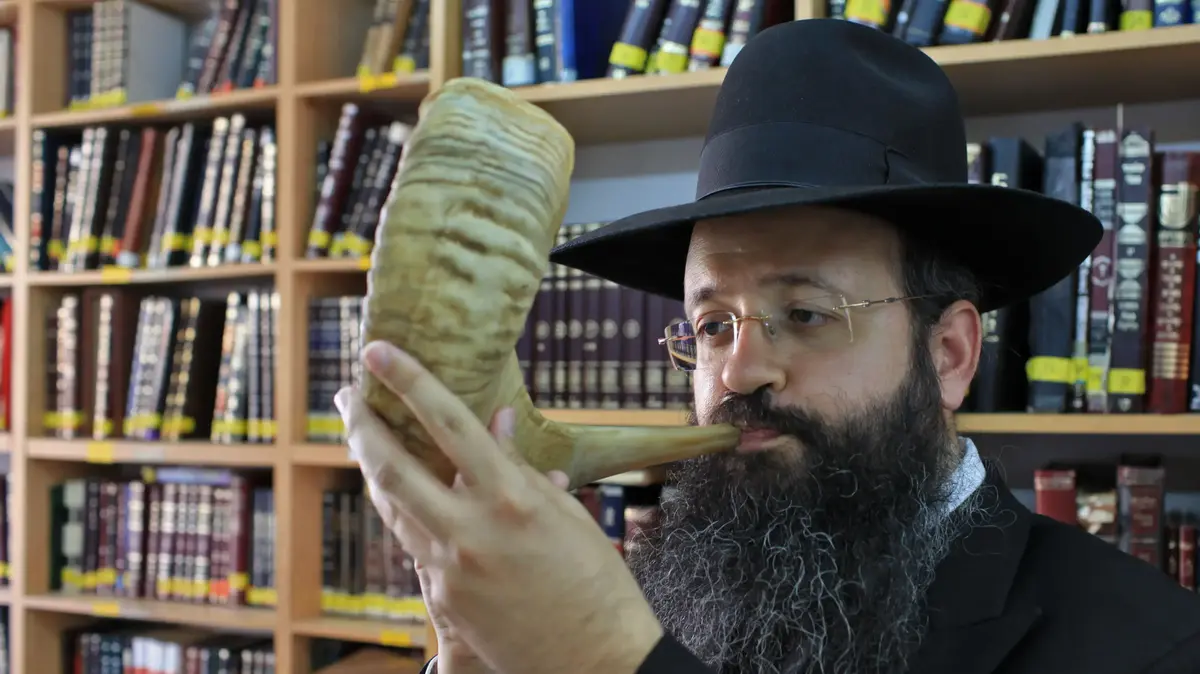The Ministry of Defense presented the investigation to the family of an IDF disabled person who is hospitalized in a critical condition • "There is a gap in the ability of caregivers to provide an immediate response to the needs of IDF disabled people"
Senior Defense Ministry officials, headed by Amir Eshel, met with members of Itzik Saidian's family at the offices of the Rehabilitation Division in Tel Hashomer this evening (Tuesday), and presented the findings of an investigation conducted by an investigation team headed by the deputy director and head of the planning division, El " From (Res.) Eliaz Karni.
The main points of the research
Recognition process:
Saidian enlisted in the IDF on compulsory service on November 17, 2013, he was assigned to the position of fighter in the 13th Battalion of the Golani Brigade and participated in the fighting in Sajaiya as part of Operation Eitan.
In June 2017, Saidian, through his lawyers, filed a claim for recognition as an IDF disabled person in the Ministry of Defense's Rehabilitation Division. It contains information documents about how to contact the Rehabilitation Division, as well as the contact details of the caregivers.
In August 2018, Saidian appeared before a psychiatrist, on behalf of the Remuneration Officer.
In her opinion, the expert recommended recognizing the causal link between his military service and post-trauma and attributing half of his general disability to events outside of military service and half to events related to his military service.
A few days later, Itzik was sent a decision by the Remuneration Officer to approve the claim for recognition of disability caused to him in full due to post-traumatic stress disorder that occurred during and as a result of his military service.
In the meantime, Itzik was referred to a medical committee for the purpose of determining his disability percentage, while the members of the medical committee were informed of the recommendation of the expert's opinion as stated above.
Proceedings before the medical committees:
In October 2018, Itzik, accompanied by his lawyer, before a district medical committee in Be'er Sheva.
The committee determined him to have a temporary degree of disability at a rate of 25%, until October 2019. The committee attributed all percentages of disability for the post-traumatic stress disorder (25%) to his military service.
After appealing the percentage of his disability, a higher medical committee was set up for him.
The committee held two hearings and at the end determined its 25% permanent disability.
The committee changed the disability clause to one that qualifies for 50% disability in accordance with the regulations for the degree of disability tests, but Itzik was set at 25% at the expense of the service and no disability percentage was set at the expense of the service.
In January 2020, Itzik, alone and without representation, filed an appeal with the Jerusalem District Court against the decision of the Supreme Medical Committee.
After failing to file statements of claim in the proceeding, a month later a court decision was made to strike out the appeal due to inaction.
Attempts at rehabilitation after recognition:
The assistance to Itzik included the payment of monthly living allowances for extended periods (even in the absence of entitlement to this by law), monthly assistance with rent, mentoring on a weekly basis, convalescence leave and more.
Throughout the treatment, the rehabilitation workers invested an initiated effort to maintain contact with intensity and availability, in order to build trust and put themselves at his disposal as an address in all matters and while trying to act to create a therapeutic sequence.
After the Supreme Medical Committee, his medical condition worsened and he had difficulty coping with the medical committee's determination in his case.
In professional consultation with the caregivers in the district, it was decided to refer him to a multidisciplinary team to examine his ability to work.
In August 2019, a multi-professional team was established for Itzik, who recommended the construction of a temporary rehabilitation plan and a temporary incapacity for six months.
Itzik was then sent the decision to approve a monthly living allowance until the end of January 2020. In February 2020, his application for extension of eligibility for rent assistance for another year was approved.
On January 30, 2020, another multidisciplinary team was established, in which it was determined that Itzik was eligible for a part-time job for one year.
Itzik started working part-time and at the same time received a living allowance payment until December 2020.
The events that preceded the day he set himself on fire:
In January 2021, on the recommendation of the medical authorities, Itzik was approved a living allowance for two and a half months (January-mid-March).
And in early February, at another meeting of the multi-professional team, it was recommended to determine incapacity for work for a temporary period of two years.
On April 8, 2021, following the recommendation to determine his incapacity for work for a temporary period of two years, Itzik asked the rehabilitation worker to examine the extension of the monthly living allowance.
The employee replied that the recommendation for temporary incapacity did not automatically entitle him to this benefit and that the matter would be examined.
Itzik was upset and had a hard time accepting it.
On Sunday, April 11, the employee informed Itzik that his application for full monthly living allowance had been approved until September 2021. In the meantime, he was informed that for technical reasons, part of the payment for April will be paid only at the end of the month. That evening, at 9:27 PM, Itzik sent a disturbing text message of a personal nature to the rehabilitation worker. The rehabilitation worker called him immediately and sent him anxious messages to check the meaning of the message. After not answering, the employee updated her superiors. She also updated the doctor treating Itzik, and asked him to contact him. The employee also talked to the owner of the apartment where Itzik lived in a rented apartment, and asked him to check if he was in the apartment. The employee also spoke with his mentor on behalf of one of the associations.
At 22:17, the rehabilitation worker sent another message to Itzik, in which she stated her concern for his safety, asked him again to update on his condition and stated that as long as he did not contact her, she would have to contact the police.
In response, Itzik replied in a message sent at 10:29 PM: "Everything is fine (employee name), I was just a little nervous."
The employee then held another round of consultations with the parties handling it.
Test team conclusions:
• Given an injury in combat to a fighter, even when recruited for combat service, an examination is still performed regarding his past.
In the Itzik treatment process, there was a media gap between the medical committees and the benefits officer regarding the scope of Itzik's recognition.
• There was no continuity of care or "passing the baton" orderly handling Itzik between the IDF and Rehabilitation Department with filing a claim.
• There is a practice whereby the first set of temporary disability to some disabled are suffering from PTSD despite that improvement observed over the years that mental injuries.
• In view of the continuing process of recognition and approval of permanent disability, it seems that Itzik required to mobilize forces 'coping' long with the system envisaged him as hostile and as such that gave him certainty that the status and Lzcaoiotio.
• recommendation inadequacy work schedule does not allow the district rehabilitation take steps to rehabilitate the disabled (employment , Studies, etc.) and on the other hand also does not entitle the disabled person to a living allowance according to law.
• Today, the degree of disability due to post-trauma is determined by functional status, without placing enough emphasis on the derivative mental limitations and the unique nature of this injury (reflected in the test regulations for degrees of disability).
Some of the medical records and protocols of the medical committees suffer from the fact that they do not faithfully express the decisions as brought to the attention of the disabled person including technical deficiencies.
• The medical committee established a test clause for Itzik that is adapted to those whose post-trauma injury severely limits their functioning to 50% disability. The medical committee has an independent quasi-judicial authority. However, and with the requisite caution, the examination team believed that in view of the determination of this test clause, it was appropriate to determine that all 50% of the disability is at the expense of the service.
• In order to succeed in the recognition process and the medical committees, the disabled have to be assisted by legal service, sometimes senior, and at considerable costs.
• There is a gap in the ability of officials handling the field to meet the immediate pressing needs of disabled IDF veterans.
• in connection with the disabled throughout all phases occurred a significant gap in human resources to rehabilitation department and ballet load bureaucracy stems from the provisions of the law and the provisions of Division.
• It should be noted that on the other hand, treatment The Itzik Saidian Division Along the way, many points were identified in which his plight and the complexity of the case were identified
. The investigation shows that within 38 seconds, the security guards managed to put out the fire and provided him with initial treatment until he was evacuated in an intensive care unit to the hospital, five minutes from the beginning of the incident.
Preliminary recommendations:
1. To make a value-based decision according to which a fighter who was recruited for combat service and was injured - personal background or past disabilities from the period before his enlistment must not be taken into account.
2. Allow a "green track" for any fighter injured in an operational event.
Carry out a comprehensive reform with regard to the recognition of post-traumatic disability and the provision of a broader and more diverse framework of tools for rehabilitation, including examining an alternative treatment basket for the disabled and providing a professional response that will be available around the clock.
4. Limit the period of temporary disability due to post-trauma and examine the change in the functional test items to determine the percentage of disability due to post-trauma.
5. To act to significantly shorten the duration of the recognition procedure, while setting a time frame that will be known to the disabled person (conditional on resources 21). The recognition procedure must be made accessible and friendly to the disabled person, so that the need for legal advice is marginal.
6. Immediately update the subsistence benefits until the "Aminach Ram Reform" applies, while creating a legal entitlement to subsistence benefits in the event of loss of temporary work capacity.
7. Establish a control and audit body for the activities of the medical committees.
8. A comprehensive reform of the service provided to IDF disabled people is required, including improving the written wording for the disabled population and giving additional powers to the rehabilitation districts.
9. Action must be taken to significantly increase the standard of manpower in the field units in the rehabilitation division.









/cloudfront-eu-central-1.images.arcpublishing.com/prisa/OJSQ7GWB5BC4XBQDMMJFYJF5BU.jpg)